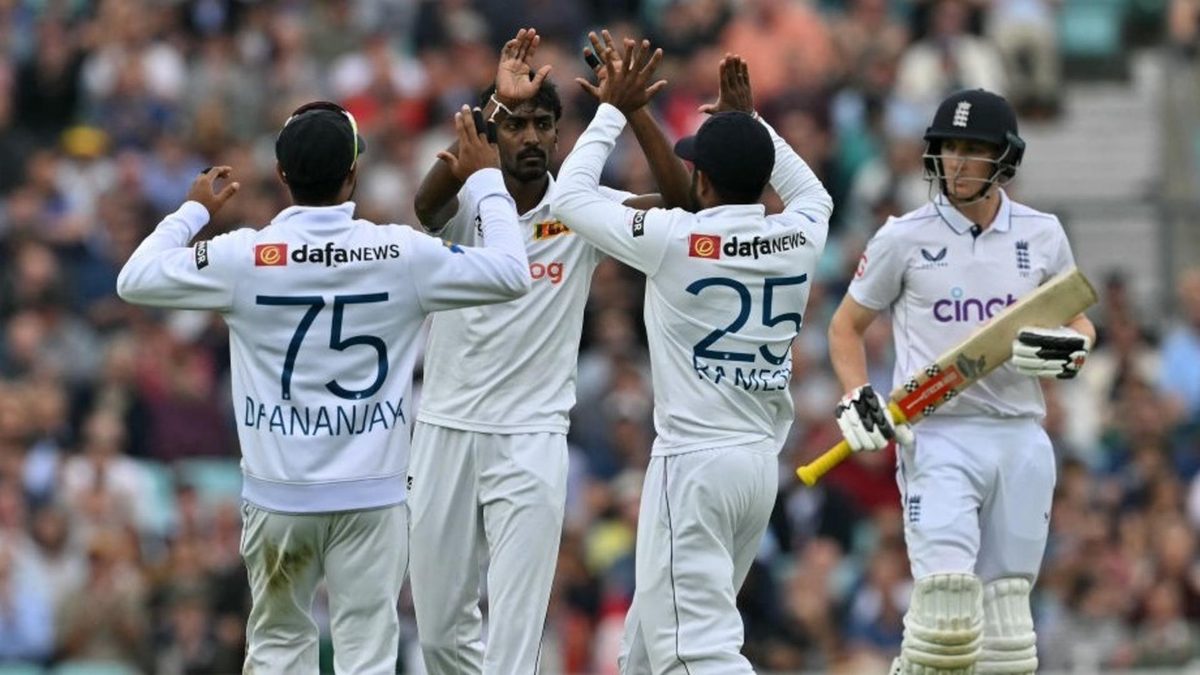
England have played the 2024 Test summer on the front foot. Ever since news broke of James Anderson’s impending enforced retirement from the Test game, it was clear that England had their eyes set on battles further down the line, chiefly next year’s tour of Australia where their recent record is abysmal.
When they rock up Down Under next November, it will have been nearly 15 years since they last won a Test, let alone a series, on Australian shores. Despite the broadly positive progress made over the first two years of the Stokes-McCullum era, the feeling was that for England to have their best chance of competing in Australia, the side needed to regenerate further
A succession of bold selection calls were made, and most of the big decisions have paid off. Anderson, Leach, Robinson and Bairstow were all moved on, while county cricket’s most prolific seamer Sam Cook continues to wait for a first Test call-up even after Anderson and Broad’s retirements. In came Jamie Smith who has been a revelation in the middle order while England, for the first time in a long time, are building a stable of quick-enough seamers with the raw materials to succeed in Australia.
While it is true England’s bowlers haven’t been penetrative enough Down Under on recent tours, successive maulings in Australia have not been solely down to a lack of wicket-taking threat. In 2021/22, Australia breached 450 just once – their domination was largely down to England’s propensity to capitulate with the bat as much as anything else.
England’s failure to rack up massive totals on flat pitches has been a longstanding problem. And while they are looking increasingly well placed to consistently take 20 wickets per Test in overseas conditions where there is less movement through the air and off the pitch, their batting line-up continues to lack a ruthlessness to make the most of dominant positions.
Losing to Sri Lanka at the Kia Oval is not the aberration that there is the temptation to make it out to be. The visitors are stacked with batting talent, so much so that the prodigious Pathum Nissanka couldn’t get into the team for the first Test of the series. Their bowling has been inconsistent but when they’re on the money and fit, Lahiru Kumara and the Fernandos, Asitha and Vishwa, are a real handful. They will have days out like Sunday where conditions are in their favour and they run through good batting line-ups.
That said, Sri Lanka had no right to be in the Test after the first day’s play. A wayward couple of sessions in helpful bowling conditions were pounced upon by Ollie Pope in particular. At one point on the second morning, England were 261-3 against a tiring attack with 28 overs left until the visitors would be granted a second new ball. The Test was there for the taking but instead they squandered a position of total dominance, letting the visitors back in the contest, collapsing dramatically losing their final seven wickets for 64 runs. All 10 England wickets were out caught, none of them in the slip cordon.
Despite the pre-Test narrative, a performance like this had been around the corner. Joe Root’s twin centuries at Lord’s masked an otherwise unconvincing team effort, while the opening Test at Old Trafford saw Root and Smith battle hard to get England over the line in the fourth innings.
It is worth noting that this England batting line-up is particularly vulnerable. They are without Zak Crawley who is up there with their most consistent players in the last 12 or so months, while Ben Stokes’ absence has been managed by Woakes receiving a promotion up to seven. Josh Hull’s introduction at the Kia Oval saw England further weaken their batting, given that England replaced someone with a Division One hundred in 2024 in Matt Potts with a 20-year-old with a career batting average of three.
The nature of their day two collapse had a familiar feeling to it. England’s most memorable defeats under McCullum have had a sense of self-infliction about them; not making the most of particularly batting friendly conditions against Australia at Edgbaston and Lord’s last year, the infamous Wellington loss after enforcing the following on. There was a casualness to England’s batting on day two that opened the door to the possibility of a Sri Lanka fightback; if they have serious hopes of winning Down Under, they need to eliminate those sorts of passages of play, as much as they need to assemble a battalion of quicks who complement each other in Australian conditions.
The likes of Brook and Duckett have left a lot of runs out there this summer. Brook, who is obviously a player of immense potential, has been dismissed between 30 and 65 in half of his home Test innings. He averages under 40 in home Tests. Similarly, Duckett has one home Test hundred after two summers at the top of the order despite his relentless accumulation of promising starts. Both are excellent players, both have excellent numbers – but for England to get to the next level, they need them to dominate whole days of cricket rather than the occasional mini-session, however breathtaking they may be to watch. Australia and India (who visit England next summer) will be buoyed by how easily Sri Lanka bored Brook into a rash shot on the second morning.
In all, it has been a good summer for England. The emergence of Smith and Atkinson are causes for genuine excitement, and the bowling group more generally looks well placed to cope in less favourable overseas conditions. With the bat, there are still occasions where they lack a ruthlessness that’s a common denominator in the game’s best sides – eliminating that tendency to gift back momentum to the opposition is the next step in this side's evolution.
Follow Wisden for all cricket updates, including live scores, match stats, quizzes and more. Stay up to date with the latest cricket news, player updates, team standings, match highlights, video analysis and live match odds.








